The Gentling Box / Lisa Mannetti
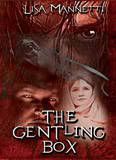 Dark Hart Press / October 2008
Dark Hart Press / October 2008
Reviewed by: Martel Sardina
Lisa Mannetti’s debut novel, The Gentling Box, was on this reviewer’s short list of must-reads. As a child, I heard many stories about gypsies, and none of them had happy endings. Gypsies were to be feared, not trusted. And while it might seem slightly ridiculous, the mere thought of reading a novel about gypsies stirred up some of those childhood fears.
The novel opens in June of 1864. Imre, a half-gypsy horse trader, is near death having been afflicted with a disfiguring disease as a result of encounters with the powerful sorceress, Aneyeta. Imre has a decision to make. Will he claim the hand of the dead in order to stop Aneyeta and save his daughter, Lenore? Before he can decide, he must reflect on events leading up to this fateful moment.
While the story itself is written well, Manetti missteps a bit in her narrative structure. The first five pages are set in the present. Then Manetti takes readers back nearly a year in time to recount the pain and suffering Aneyeta has brought to Imre and his family with the intention of demonstrating why Aneyeta must be stopped. While the reader is ultimately brought back full circle to the present-set opening, I found myself wishing that the first five pages had been cut from the manuscript. As a reader, I would have enjoyed the story more if I had not known some of the details revealed in the opening pages – or the back cover copy. Going in, I felt like I knew too much about what was to come. At times, I felt like I was waiting for what I expected to happen instead of being surprised by the story as it unfolded. Telling the story in chronological order would have improved the story’s pacing – as well as added an element of surprise.
There were also many references throughout the book to the various characters’ eye colors. In some of the scenes, it’s clear that the author’s intent is to help the reader differentiate between when Aneyeta’s spirit is present and when it’s speaking through her host. But these continued references are distracting and left this reader wondering if there was some other connection between gypsy lore and eye color.
That said, Mannetti does a very good job with the characterizations and creating a believable setting. The reader is able to empathize with Imre and truly understand why the choice to stop Aneyeta is such a difficult one. The inclusion of the Romany language in the characters’ dialogue adds an additional layer of depth and authenticity, and the transitions to explain the foreign phrases are seamless.
From a stylistic standpoint, Mannetti does a good job of keeping the language true to the time period. Aside from a few times when the language feels a bit too contemporary, the reader will be left with an overall feeling of authenticity from Mannetti’s 1860’s Hungary. It’s apparent that the author went to great lengths to research the time period and gypsy culture to get the details just right. As a reader, this reviewer’s enjoyment of the story was enhanced by her efforts.
The Gentling Box is a solid effort from debut novelist Mannetti. Here’s hoping that readers will be enjoying more of her tales in the years to come.
Purchase The Gentling Box, by Lisa Mannetti.
Heart of Ice / Gregg Olsen
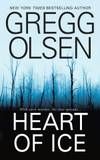 Pinnacle / March 2009
Pinnacle / March 2009
Reviewed by: Rick R. Reed
Somebody should tell Gregg Olsen his true crime roots are showing. The venerable New York Times bestselling author of such non-fiction page-turners as If Loving You is Wrong and Abandoned Prayers has lately turned a practiced eye toward the writing of crime fiction.
With delightful results.
Heart of Ice is Olsen’s third thriller, after A Cold Dark Place and A Wicked Snow and if this new novel is any evidence, Olsen is getting better and better with each outing. And that’s no small praise: both previous fiction efforts were solid, compelling, and fiercely entertaining entries in the genre.
On the surface, Heart of Ice has all the elements of a competent thriller. There’s a murder investigation that will have readers recalling the Scott Peterson case, there’s a determined police investigator with problems of her own and a budding romance with a partner in crime. There’s a serial killer on the loose, targeting beautiful sorority girls (Ted Bundy, anyone?). And the serial killer has an agenda that will eventually strike dangerously, perhaps even tragically, close to home for the book’s heroine investigator.
Heart of Ice, however, rises above the requirements of the crime thriller genre in its detailed depiction of a killer. In fact, the book, while fulfilling the genre wish list of suspense, sympathetic characters, and page-turning plotting, also works as a meditation on evil. I was almost ready to fault Olsen for spending so many pages on the killer, but then I began to realize how much better this fleshed-out narrative of his back story and present life made the book. This portrait of a serial killer makes us think: about the nature of evil, about where it comes from, and—most chillingly—how it can exist almost undetected among the most mundane settings and people. As we see the killer in his suburban home, at his run-of-the-mill white collar day job, and being “Daddy” to his two small children and husband to his loving wife, we may be shaken and dumbstruck by how the most evil of flowers can bloom in the most common soil and terrifyingly, can wind up next door to us. In the end, what really gave Heart of Ice its power and punch was the fact that—willingly or not—we become compelled to intimately know a murderer. And while his deeds may inspire little sympathy, we can understand what drives him and can understand how his twisted logic and tragic family history conspire to create a monster.
I suspect Olsen’s background in writing true crime allowed him to get so deeply into the heart of his anti-hero, and while the book spends way more time on him than most other genre entries, it’s all fascinating stuff, making Heart of Ice a unique read. Olsen offers something a lot of crime thrillers can’t: a unique background view into the very real world of crime…and that makes his novels ring true and accurate, lifting readers (or perhaps lowering them) into a nightmare world that’s as frighteningly common as today’s headlines.
Purchase Heart of Ice by Gregg Olsen.
Frozen Blood / Joel A. Sutherland
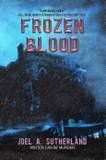 Lachesis Publishing / December 2008
Lachesis Publishing / December 2008
Reviewed by: Vince A. Liaguno
An apocalyptic hailstorm, murderous sibling rivalry, schizophrenia, and ghostly manifestations are the unlikely ingredients in Joel Sutherland’s debut novel, Frozen Blood – a potboiler of gothic suspense likely to leave readers chilled to their cores.
When Tara Stewart receives word that her cruel, disapproving father has died, she reluctantly sets out for the affluent Canadian mansion he once shared with her twin sister, Evelyn, and her physician husband, Peter. Compelled by familial obligation, yet dreading the likely confrontation with the family she hasn’t spoken to in years following the tragic death of her six-year-old niece, Tara’s unease is compounded by a violent hailstorm that seems to be gaining in intensity with every passing mile marker.
Injured upon her arrival, Tara is immediately thrust into an increasingly hallucinogenic nightmare in which her sanity (and sobriety) is sorely tested, questioned, and manipulated. It isn’t long before readers will begin to question what’s real and what’s not. Is Tara the victim of a vindictive gaslighting, part of a nefarious plot that involves forced surrogacy? Or is she the hapless casualty of her own mind, her guilt manifested into ghostly apparitions of the past? Along the way there’s a body or two to bloody up the proceedings and a clever subplot involving a radio disc jockey that keeps the action from becoming too claustrophobic.
Sutherland’s characterizations of his principles are strong across the board, with Tara being a clear standout. Battered and bruised by life, she’s a woman struggling to keep her proverbial shit together. And battling her every step of the way is a battalion of demons of every shape and size – alcoholism, guilt, inadequacy, misplaced blame. Sutherland crafts a deft portrait of a tortured soul:
She would live with those memories forever and she knew, no matter how many times she apologized to her friends, to her family, and to herself, they would never go away, never leave her in peace. They’d haunt her just as tirelessly as the wraith – now officially a ghost, I guess – of her father. That was the price she’d pay and she could live with that – she had to – although it was harder than hell to do. Whenever her bad memories surfaced, the ones that made her cry, made her itch, made her bite her tongue until it bled, she forced her mind to shut down. Ctrl+Alt+Delete, just like a machine. She’d think about anything else, she’d sing to herself, she’d smoke. But this time she was distracted and she didn’t shut down in time. Three years. Haven’t spoken to my sister in three years. The memories were in her head now and they were flowing and there wasn’t time to stop them.
There are mystery elements aplenty at work here as Sutherland points the finger of guilt in one direction before turning the compass of culpability in another. With shades of the 1987 film Dead of Winter, hints of Agatha Christie, and just a drop of Shirley Jackson’s The Haunting of Hill House, Sutherland’s Frozen Blood successfully melds elements of the supernatural with the psychological to create an impressive hybrid with a distinctive old school literary vibe. That the author can take these diverse elements and make them work so well against the strangely incongruent end-of-days backdrop is the mark of a genuine craftsman, making Sutherland a talent to watch.
Purchase Frozen Blood by Joel A. Sutherland.
Gunpowder / Joe Hill
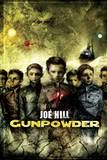 PS Publishing / December 2008
PS Publishing / December 2008
Reviewed by: Blu Gilliand
Joe Hill has made quite a name for himself writing stories with more than a hint of darkness. So it should come as no surprise that his first foray into Science Fiction, that world of gleaming metal and starlight, has more than its share of shadows. In Gunpowder, the shadows aren’t filled with ghosts and beasts, however; they’re filled with bad decisions, regret, and the inherent danger of power in the hands of children.
Gunpowder, the planet, is so dubbed by its would-be makers, a group of children engineered to be psyformers, those who can make and remake reality with their minds. Perhaps someone thought placing such power in the hands of children was smart; after all, children rarely dwell in personal agendas and political bickering. But children dwell often in the land of imagination, and these children - these boys, for they are all boys on Gunpowder, with the exception of protector/mother figure Elaine – like to dream of things like knifeblade grass and arsenic rain.
Their job, their reason for being, is to make the planet habitable. They are one of many groups scattered across the void, trying to make worlds where people can live. They are happy there; even Charley, for whom The Talent never properly manifested, finds peace among his brothers. But as so often happens, that peace is fleeting; one day a new leader arrives, one bringing terrifying gifts and news of war. The boys have another purpose, it seems, and like it or not, they are about to be called to duty.
Hill builds tension from all sides, driving characters and readers alike to the inevitable breaking point with precision. Just like the boys of Gunpowder, we know things are going to go change the moment that approaching skyboat lands – and probably not for the better. This is Lord of the Flies for boys who don’t need – and don’t want – to be rescued. By the end of the story, new leaders are indeed in place on Gunpowder, but it’s not the leaders anyone intended.
With each new piece of output, Hill is showing that he is a natural-born storyteller. Novel, short story, comic or collaboration, he seems to have an intuitive sense of what makes each particular medium work. Hill has hinted that Gunpowder may be the first in a series of stories revolving around these psyformers, and the payoff of this novella certainly leaves that door swinging wide. But if he never revisits this world – which would be a shame, to be sure – there’s enough here to stand on its own. Gunpowder is a fine addition to Hill’s bibliography, and belongs on the shelf of anyone who likes a good story.
Purchase Gunpowder by Joe Hill.
Blood Sins / Kay Hooper
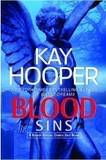 Bantam / December 2008
Bantam / December 2008
Reviewed by: Rick R. Reed
Oh, how I wanted to love Kay Hooper’s Blood Sins. I mean, look at that gorgeous blue-hued cover, spooky and evocative with the word, ‘blood’ in screaming crimson. Who could resist that cover? And the plot line? Just the back cover copy sent chills up and down my spine:
Young, vulnerable, attractive, Tessa Gray made the perfect victim. Which was why Noah Bishop of the FBI’s Special Crimes Unit recruited her as bait to trap a killer hidden inside the Church of the Everlasting Sin—a fortified mountain compound where two women were murdered in ways that defy explanation…
Wonderful. A novel that combines the best of both worlds: horror and suspense, with perhaps even a little romance thrown in. I expected Blood Sins to be a real page-turner, an up-all-night-sleep-with-the-lights-on corker that I wouldn’t be able to put down.
Yet, sadly, Blood Sins was a chore, the happiest part of reading it was experiencing the sigh of relief when I closed the cover for the last time. For a thriller, and a book with blood in its title, Blood Sins is a curiously bloodless exercise. It wants to be cinematic and over the top, the kind of special effects extravaganza snapped up by Hollywood for a blockbuster in the same vein as the X-Men franchise. And maybe that was the problem: the book is all about concept, with little thought given to execution. For all its excesses (Mediums! Psychics! Ghosts! Ripped from the headlines evangelical cults! A serial killer with tawdry sexual abuse as his motivation!), the book left me cold; it seemed plotted by the numbers and the characters were little more than caricatures. Even the evil villain at its heart seemed distant and without any fire.
But I could almost forgive all that: sometimes a good plot-driven book can hold my interest as well a character-driven one. But among Hooper’s sins is another one that’s perhaps even more damning: the author stretches credibility beyond the breaking point. She sets up her universe with the intention of grounding it firmly in reality (the FBI, law enforcement, a church compound suspiciously akin to cults like Waco and Jonestown), and then asks us to swallow a world that just doesn’t exist. Hooper has populated the book not with one character with supernatural abilities, not with even two, or even a special team, but with a world where it almost seems like every other person has some sort of psychic power. There are psychics galore, mediums, people who can create shells around themselves, telepaths and telekinetics, folks who can harness electricity and folks who can stop clocks; we have aura readers and megalomaniacs who can draw energy from women’s orgasms and harness lightning. We have healers who can knit bones almost instantly. It would be okay if this were science fiction and Hooper wanted to draw us into a world with its own internal logic, where most everyone had a sixth sense. But here, it’s just too much. Like any fan of the X-Files, I want to believe.
But Blood Sins just wouldn’t let me.
Purchase Blood Sins by Kay Hooper.
Crimson / Gord Rollo
 Leisure Books / March 2009
Leisure Books / March 2009
Reviewed by: Vince A. Liaguno
Timing is everything. And, in the case of Gord Rollo’s Crimson, the timing isn’t good. Releasing a mass-market version of your debut after the public has embraced your far-superior sophomore effort is risky business. Safe to say writers learn oodles between their debuts and that all-important follow-up, as Rollo demonstrates with last year’s Jigsaw Man, so the concept of exposing the reading public to one before the other is akin to putting the cart before the horse.
Crimson is a mishmash of Stephen King’s It, Nightmare on Elm Street 3: Dream Warriors, and The Green Mile all crammed into one paper-thin bag. The novel begins promisingly with a balls-to-the-wall prologue, followed by the introduction of four childhood friends – Tom, Peter, David, and Johnny. The latter has just moved into the long-abandoned house once owned by the murderous psychopath of the prologue and it isn’t long before the curious pre-teens are running afoul of an underground bunker and an It-like demon with glowing red eyes. There are some effective set pieces in this first part, most notably a creepy run-in with a once-beloved scarecrow in a farm field. Despite some wooden dialogue, Rollo ably captures that magical period between boyhood and adolescence. Taken as a coming-of-age tale, Rollo nails this part with King-like precision.
But by the second act, in which the boys are relentlessly pursued into their teen years by the same creature, the idea of mind control and dream invasion is introduced to lesser effect. The dream-within-a-dream device is overplayed here and quickly grows tiresome. Worse, Rollo imbues his talking creature with an almost cartoonish sense of snark that routinely breaks any mood he’s able to establish.
In the third act, Rollo abruptly shifts gears and moves the action from small-town Dunnville to a maximum-security penitentiary, requiring the reader to adapt to a new setting after having firmly established an authentic sense of atmosphere in the preceding pages. After the creature gains control of the friends’ minds and sets off a gruesome killing spree, one of them is set up to take the rap as the Ripper Killer (yes, throw some loosely-based Jack the Ripper mythos into the mix) and is carted off to jail. But the creature – whose disappointingly silly origins are explained here – soon re-appears and makes its world-domination intentions clear in a political subplot right out of Omen III: The Final Conflict. Despite the increasing suspension of belief that’s required of readers and the creature’s near-flamboyance (think Freddy Kruger meets the Jack McFarland character from Will & Grace), Rollo somehow pulls off a surprisingly effective, well-paced finale that will, despite any previous misgivings, have readers turning pages faster and faster.
Crimson seems intended to hastily cash in on the deserved success of Rollo’s Jigsaw Man rather than showcase an up-and-coming author’s talent. It’s a somewhat backwards ride through an emerging and promising career, but – like facing rearward on a forward-moving train – you know eventually things are going to turn around.
Purchase Crimson by Gord Rollo.
Afraid / Jack Kilborn
 Grand Central Publishing / March 2009
Grand Central Publishing / March 2009
Reviewed by: Martel Sardina
Not long ago, this reviewer decided that it was time to face her fear of the Zuni fetish doll from the 1975 film, Trilogy of Terror. While the jury is out on whether or not that was a wise decision, the DVD did contain an interview with Richard Matheson which I decided to watch to see if I could learn something about the craft of writing from one of my literary heroes. Instead of being enamored with Matheson’s commentary, I found myself a bit angry with Matheson for claiming to write “terror” versus “horror.” It’s bad enough when people outside the genre turn up their noses at the term horror; I was not expecting it from one of my own.
After reading Jack Kilborn’s Afraid, this reviewer now understands what Matheson meant by his statement. “Terror” stories induce fear. “Horror” stories induce not only fear, but also shock and disgust. Kilborn’s title implies that his novel is a work of terror. While there are moments of terror, especially in the opening chapter, be assured that it isn’t. Unleashing five Hannibal Lectors with Rambo training and transhuman modifications on an isolated town in Northern Wisconsin can’t result in fear alone. If it did, Kilborn would have wasted a great premise. Kilborn’s audacious choice to give readers not one, but five over-the-top villains sealed this book’s fate to be deemed horror through and through.
There are so many things Kilborn does right in terms of craft. This reviewer particularly enjoyed the seamless transitions when Kilborn shifted viewpoint characters. The story unfolds at a fairly fast pace. Kilborn doles out details and backstory only when strictly necessary, which successfully keeps the reader turning pages. It’s hard to find a breaking point when you need one, Kilborn doesn’t want readers to put this book down.
The fast pace makes it very easy for readers to get caught up in the action. So much so, in fact, that after this reviewer finished, I realized that while I was reading I wasn’t concerned about analyzing the plausibility of the characters’ actions and motivations. However, given time to really think about it, I may have to take Kilborn to task for some of the events that occurred. But those who read for the escapism should have no qualms with Kilborn’s talent as an entertainer.
Some readers may wonder why they haven’t heard seen much in the way of fiction from Jack Kilborn before. They have, but from the pen of his alter ego, acclaimed mystery writer, J.A. Konrath. Horror fans may also like Konrath’s Lt. Jack Daniels series about a Chicago cop who chases serial killers. It will be interesting to see whether or not his mystery fans have the fortitude to withstand the level of graphic violence and gore that Jack Kilborn is sure to become renowned for.
Purchase Afraid by Jack Kilborn.




